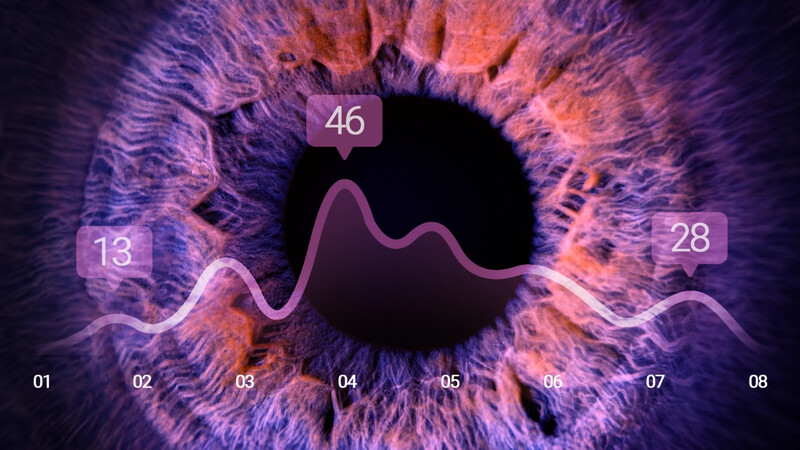How AI helps companies visualize progress
Data is everywhere. To make use of it, AI is helping businesses ‘see’ its potential.
Dealing with the data deluge—storing it, managing it, securing it, using it to generate valuable insights and results—is one of the most complex challenges companies face today. It’s also a lost opportunity of staggering proportion: Gartner estimates that 97% percent of enterprise data isn’t utilized, impacting everything from a company’s marketing effectiveness to cash flow. One reason that conventional analytics tools can’t handle the job: data insights aren’t tailored for user experience.
That’s why new forms of data visualization—the practice of taking large quantities of data and distilling them into actionable charts, graphs, infographics, and dashboards—are on the rise in enterprise organizations seeking to democratize data access and help workers more easily put the numbers to work.
While the rules of good dataviz haven’t changed in decades, the introduction of AI—particularly generative AI—has helped lower the barrier to creating it. “The quality of the visualizations you can produce with more accessible tools has just continued to improve over time,” says Max Shron, a data strategist and the author of “Thinking With Data.” These tools can help automate complex data preparation processes by lowering the technical barriers that once stood in the way of making useful dashboards. As a result, they are improving everything from cybersecurity threat analysis and supply chain management to hotel operations and blood donor management.
Enterprise dataviz is about far more than packing presentations with more punch: Companies that have created highly effective data dashboarding programs significantly outperform those that haven’t, according to a recent MIT study. Schneider Electric, the multinational energy giant, launched a dashboarding program to track how value was created in the company. Five years later, Schneider was using that program to track 50% of the company’s revenue. The program also helped shift the company to a services-focused sales model.
Businesses that invest heavily in dataviz have higher revenues and profits than their industry peers, are better at launching profitable new products, and have higher customer satisfaction, according to the MIT study. They also have more satisfied employees. That’s because data visualization democratizes how information is shared within the organization and ensures that workers have access to the data they need, when they need it, in an easily understandable format. “Everybody in the company gets to see how [the company] is doing against agreed-upon metrics,” the researchers noted. That means no one is left in the dark and no one is blindsided if course corrections need to be made.
AI enters the dataviz game
Like most fields, data visualization is rapidly evolving thanks to AI. Tableau, a leading dataviz software company, has augmented its tools with a range of no-code AI enhancements. These improvements not only help identify trends in data but provide predictive capabilities. For example, Honeywell is using the tool to visualize its entire global supply chain, optimize its spending across shipping channels, and predict areas where costs may rise.
The hardest thing to get right with data visualization is context.
Google is also adding AI to its dataviz tools, renaming its Data Studio to Looker Studio last year and embedding it with data models and machine learning systems baked in to help democratize data access and create more actionable business intelligence through its dashboarding and visualizations.
Overall, the advances are more evolutionary than revolutionary, with AI being used to improve existing applications by making predictions more insightful, relevant, and accessible to the rest of the organization. That’s good news for people who may not be experts in dataviz.
“The hardest thing to get right with data visualization is context,” says Scott Berinato, senior editor of Harvard Business Review and author of “Good Charts” (a new edition of which arrives in August). “Software can visualize data cells well and very fast, but it has no idea what your primary and secondary variables are.”
For instance, says Berinato, software doesn't know what data you’ll need to highlight in a business presentation to make your point. It doesn't know what level of detail is appropriate for your specific setting. “It doesn't know a lot,” says Berinato, but adds that AI will soon be likely to intuit context and react accordingly, getting us to a point of “better default output.”
But while AI is evolving dataviz tools, the ultimate value of visualizations remains the same: improving communication and democratizing analytics. “As companies get more data dependent, they're going to have to get better at communicating what's going on,” says Berinato. Increasingly, “auto-generated Excel crap is just a bad experience for the audience, and oftentimes people are more confused than they are helped, because a lot of your internal stakeholders just don’t speak that language.”
Dataviz, on the other hand, lets us all speak the same language. “It not only allows people to understand,” says Berinato, “it allows them to engage and ask questions. It encourages more conversation and constructive dialogue.”
We want to hear from you! Please send us your feedback, and get informed about exciting updates from The Works. Drop us a line: theworks@freshworks.com.
